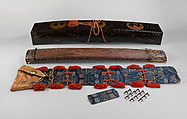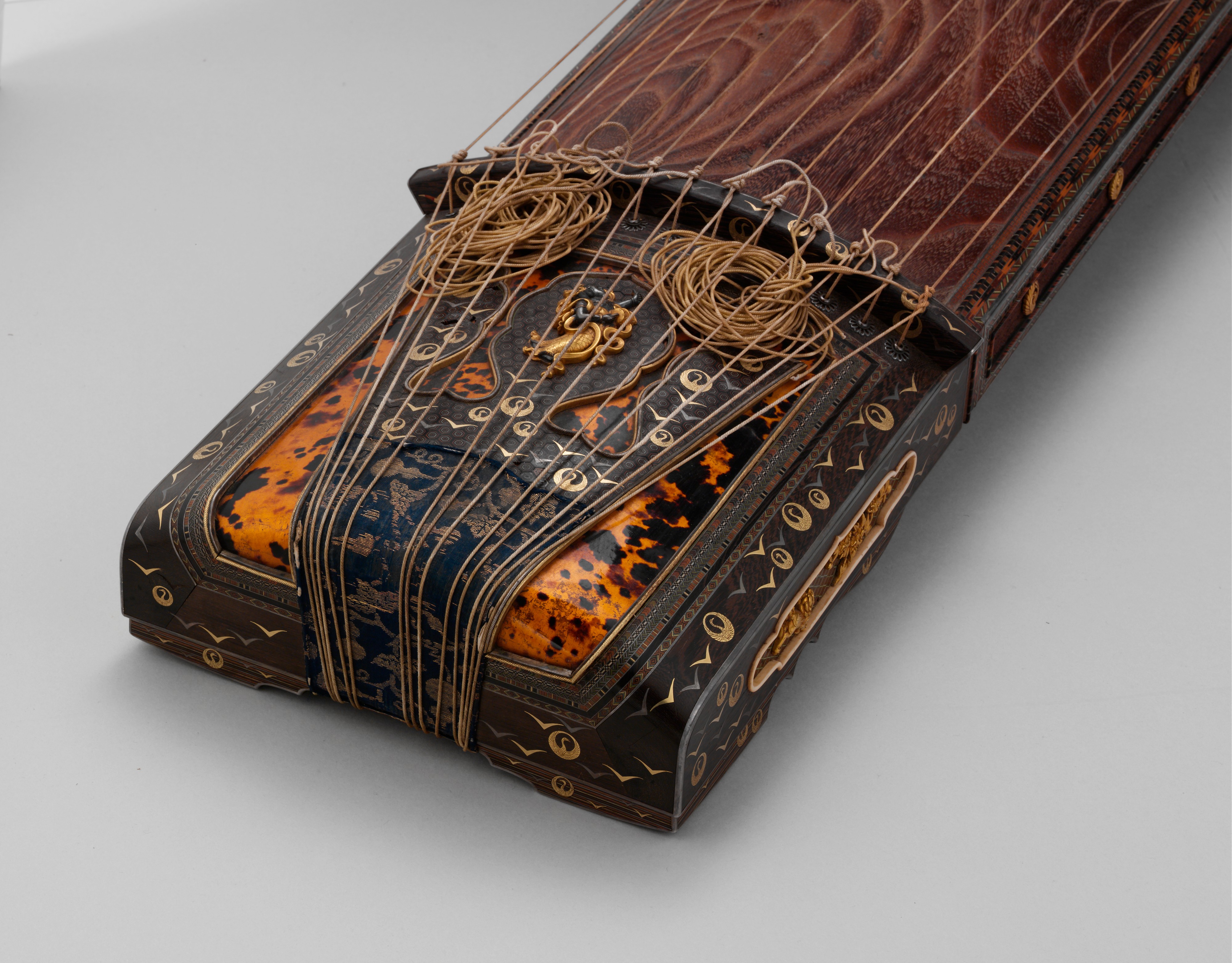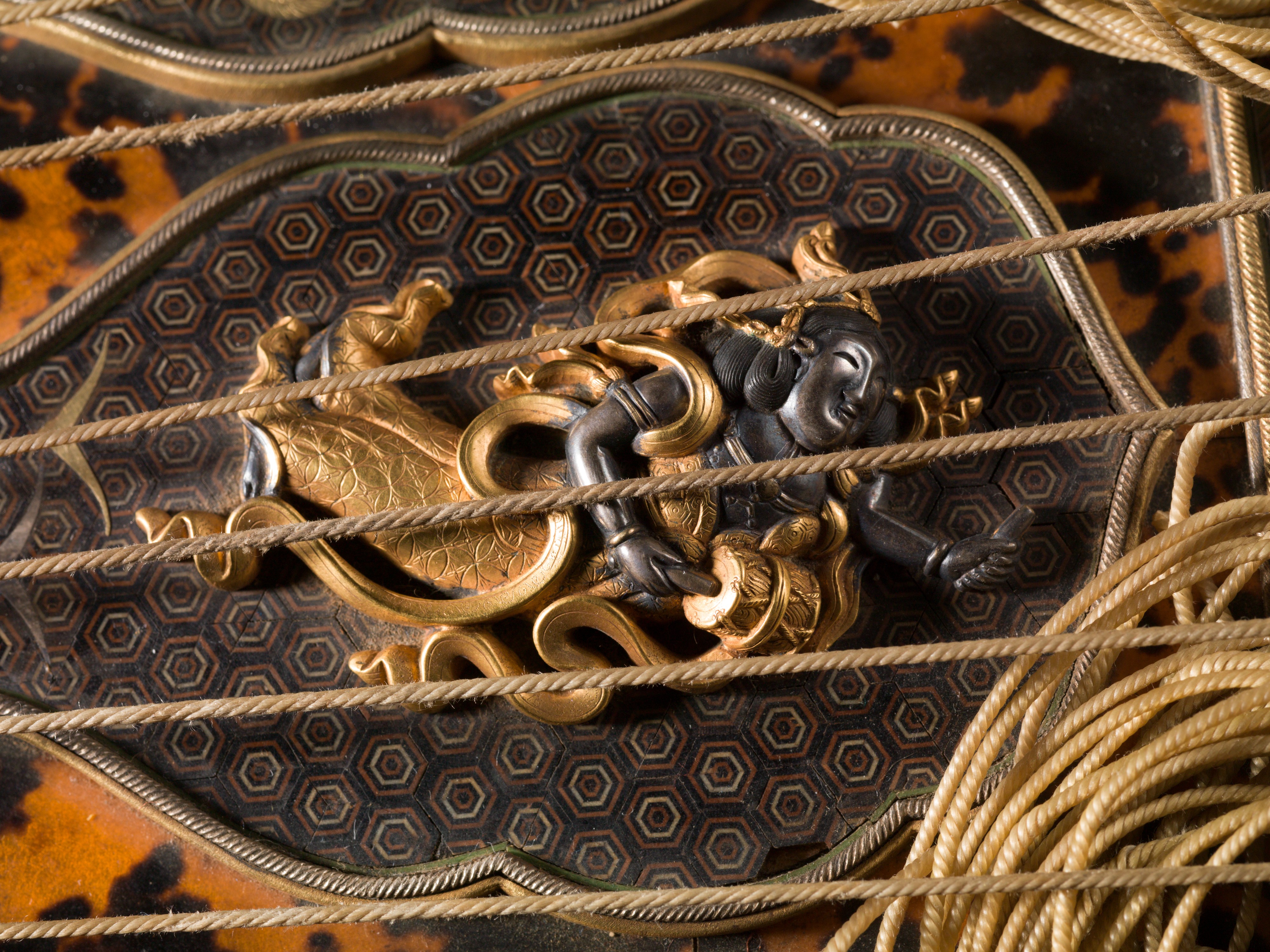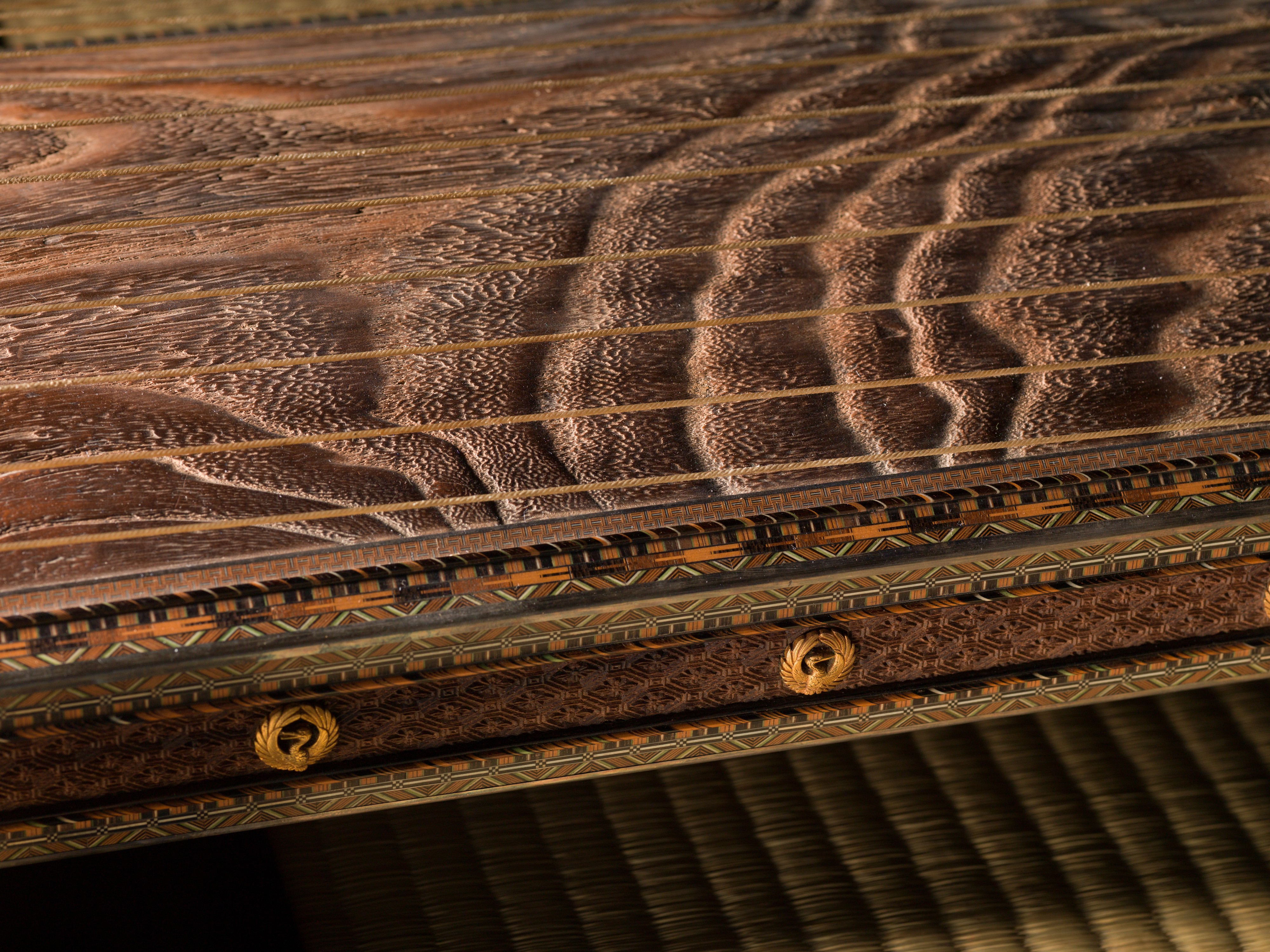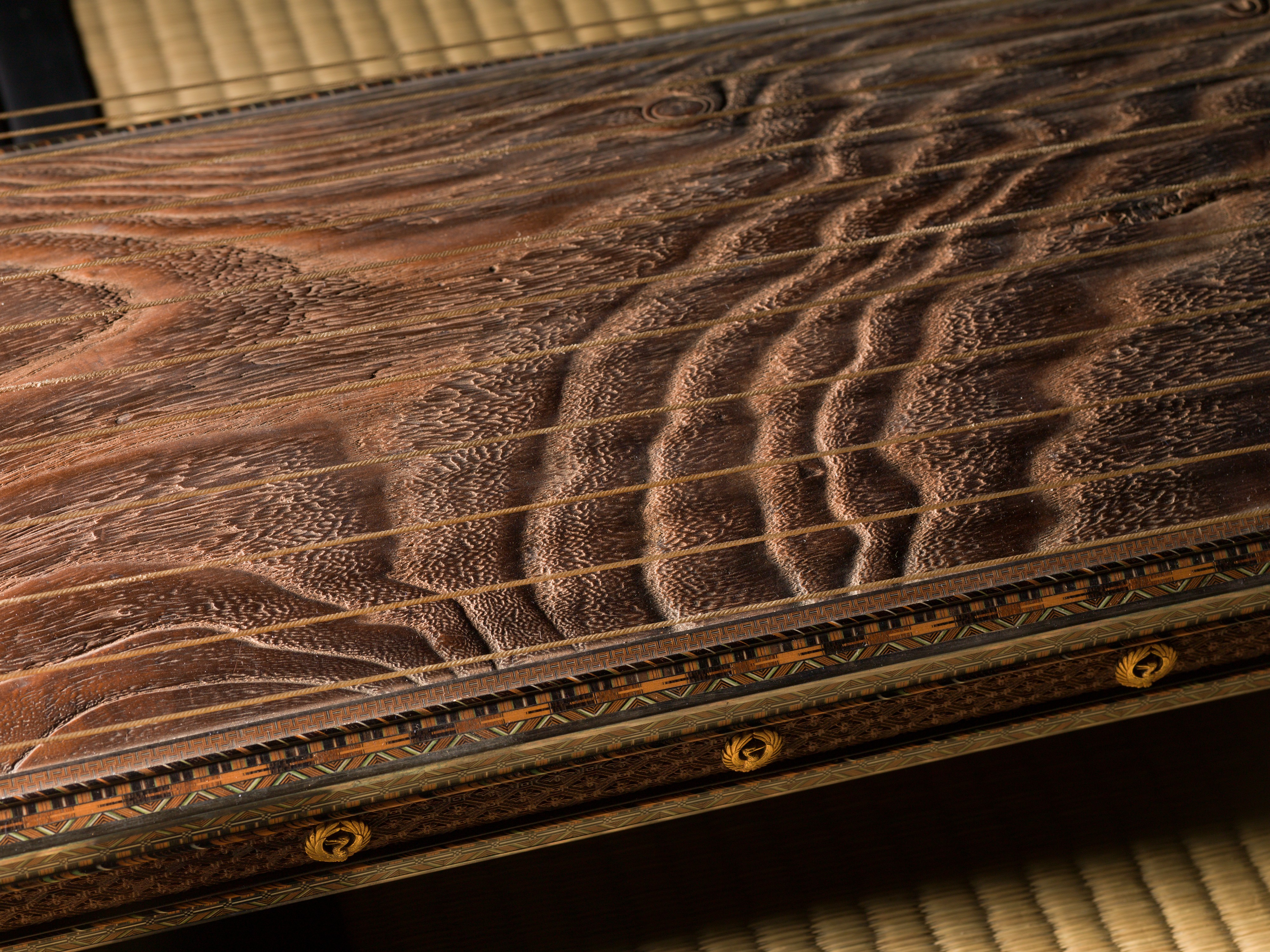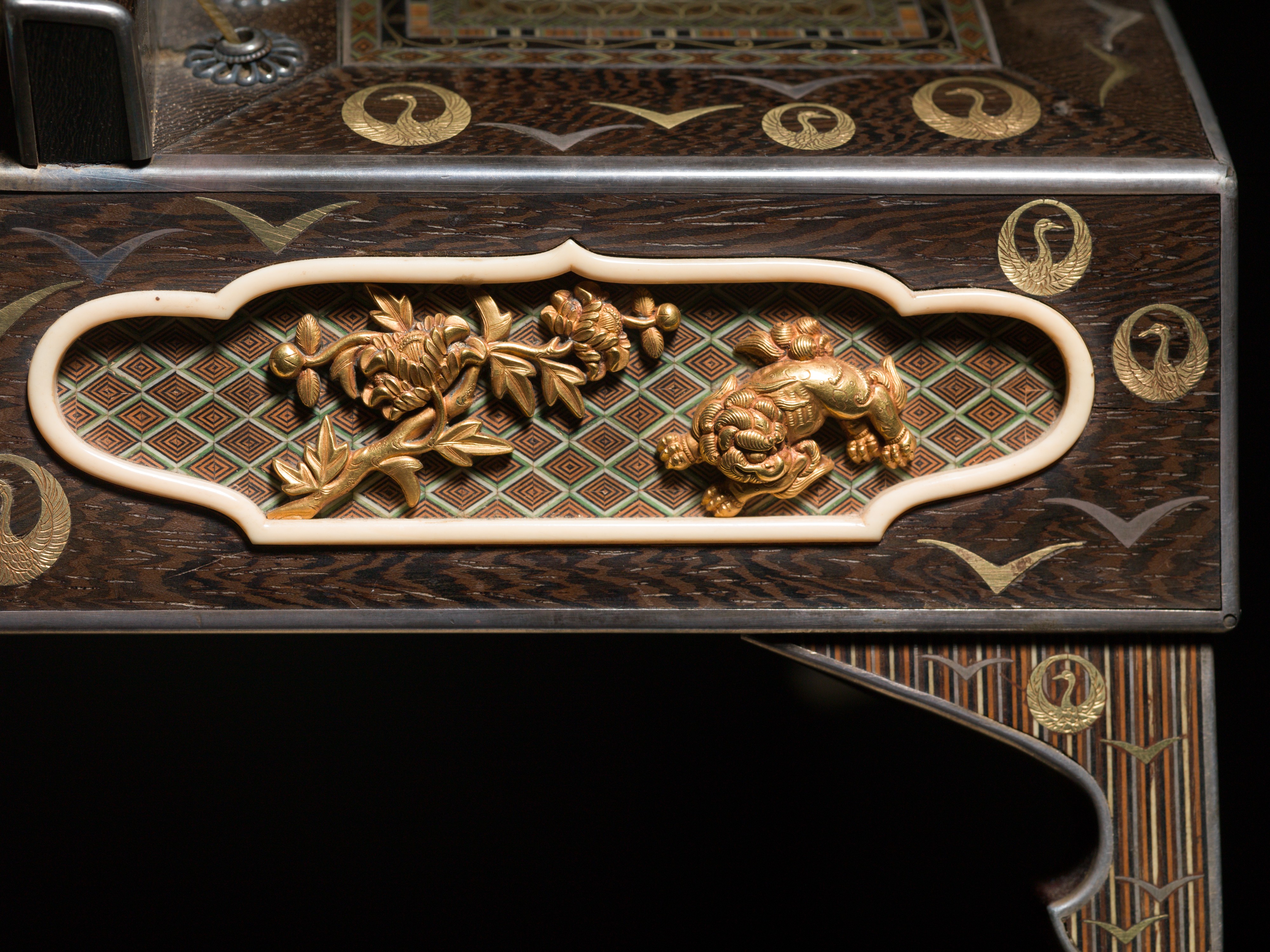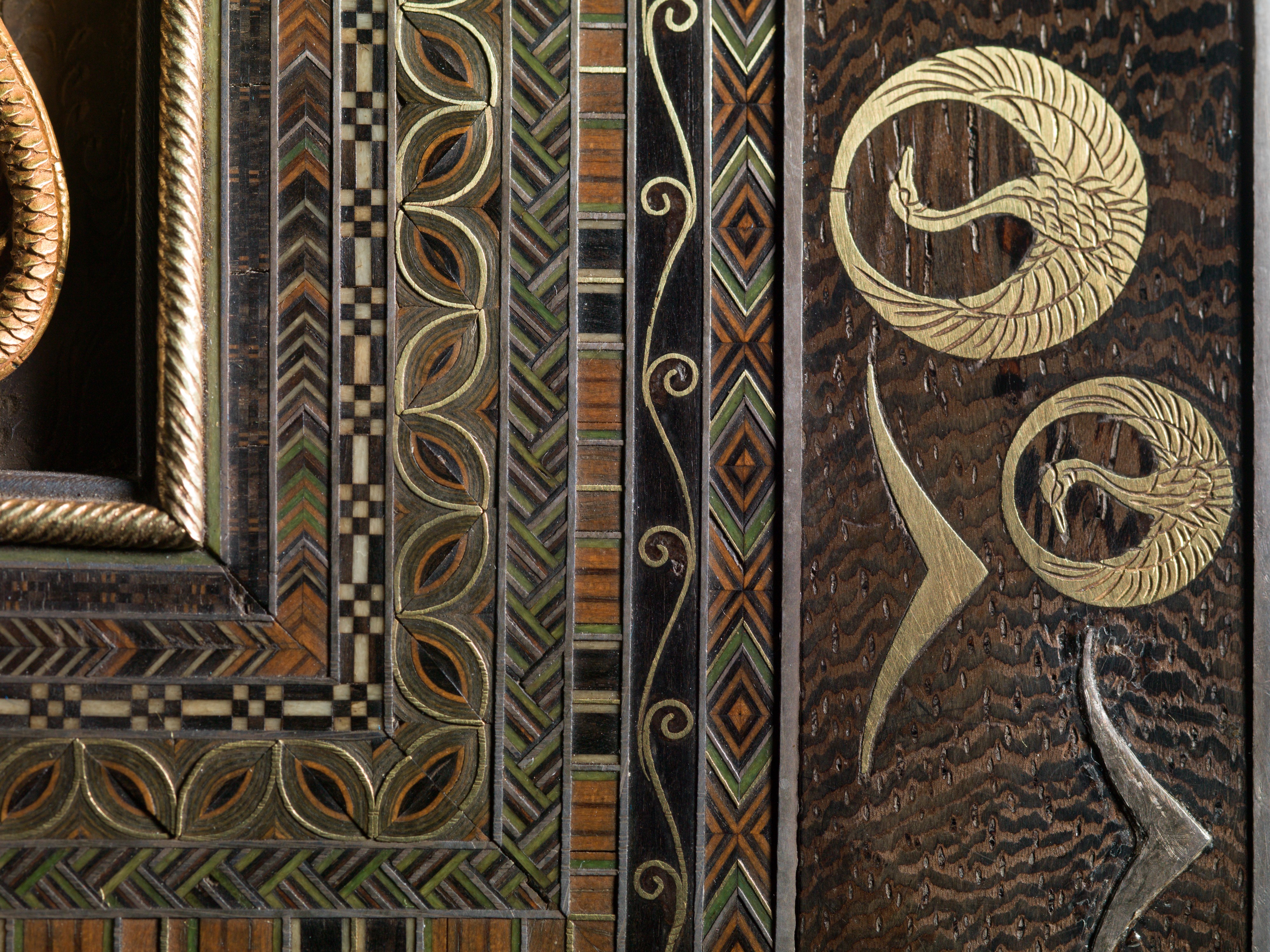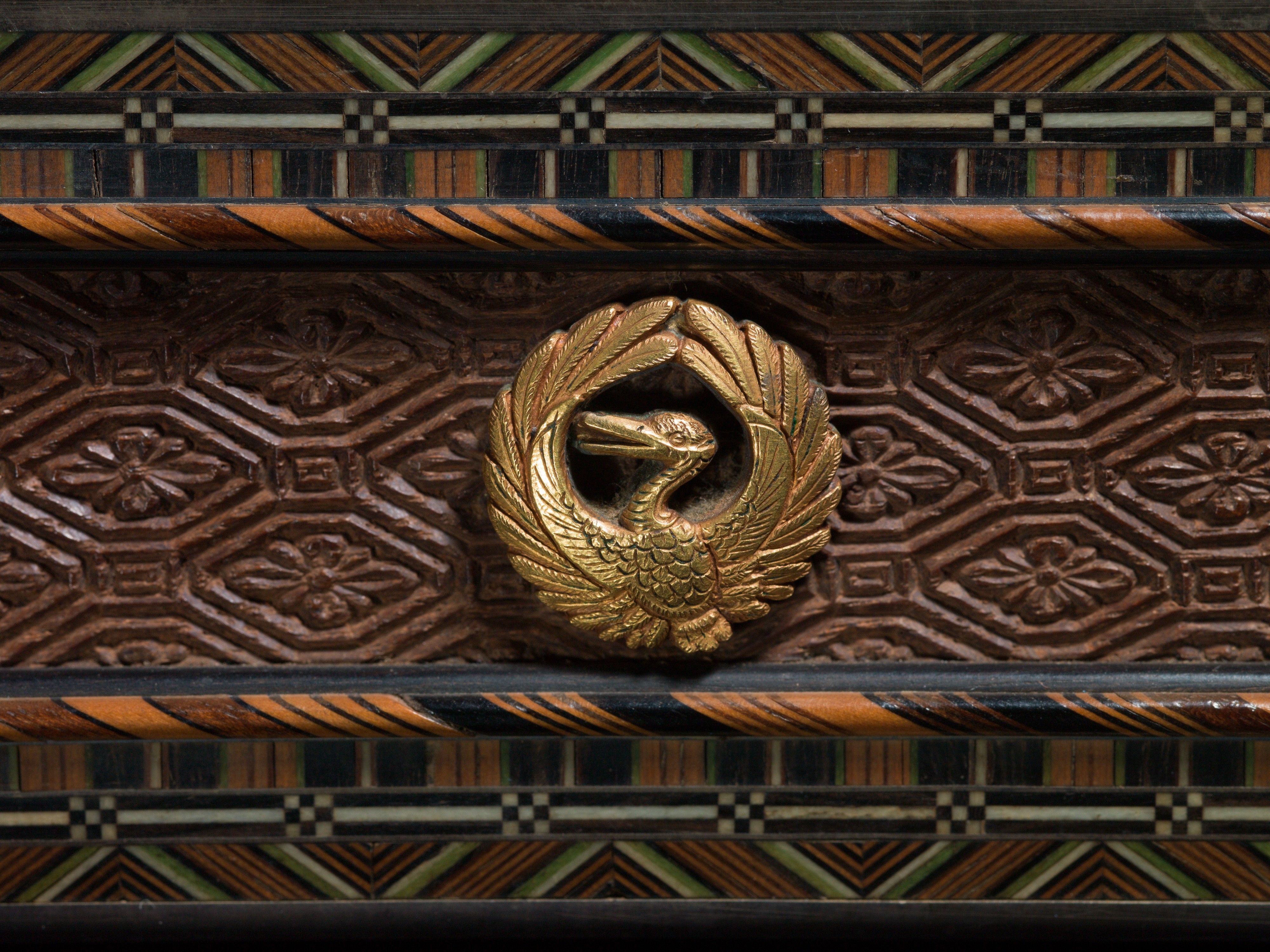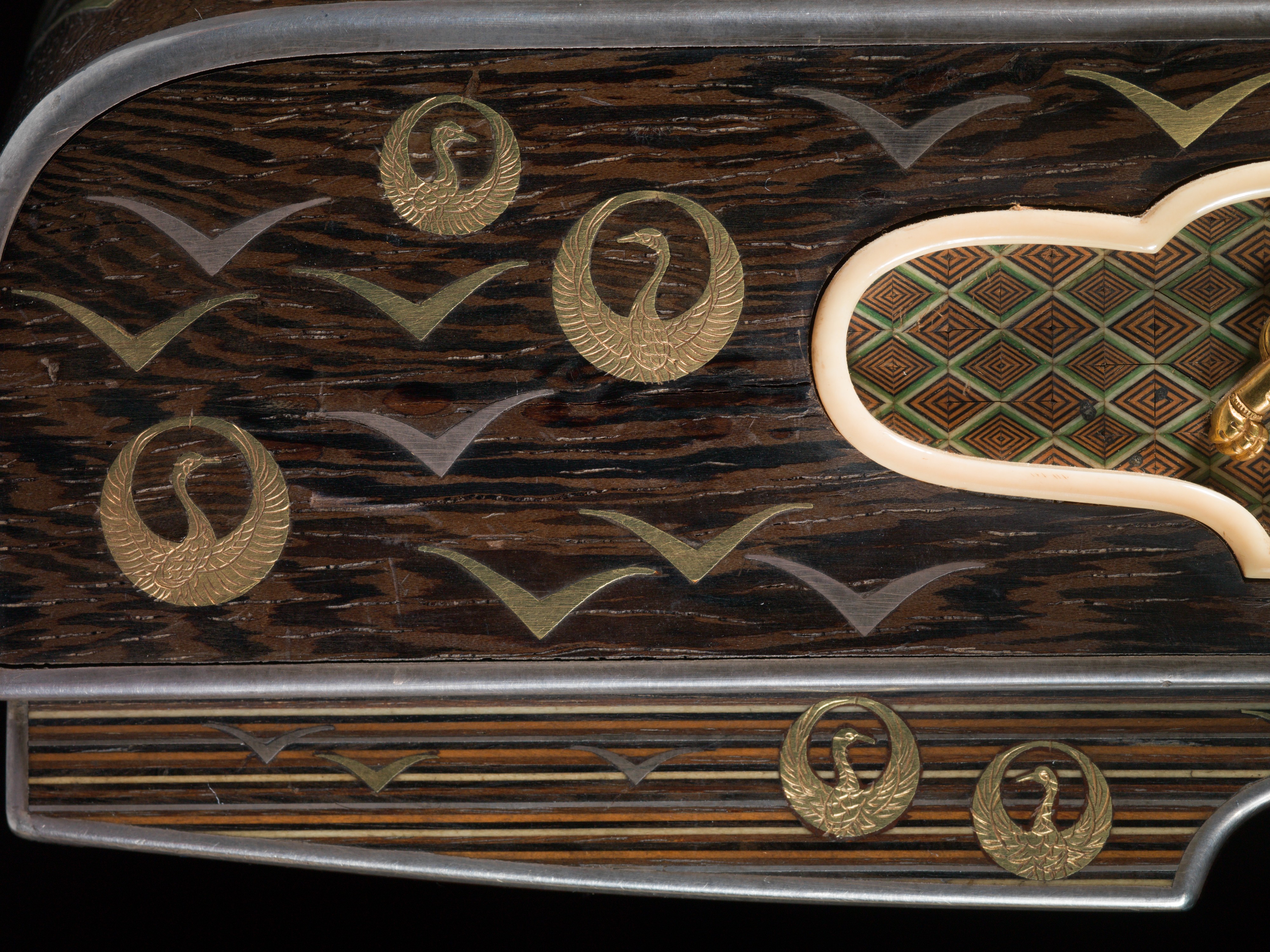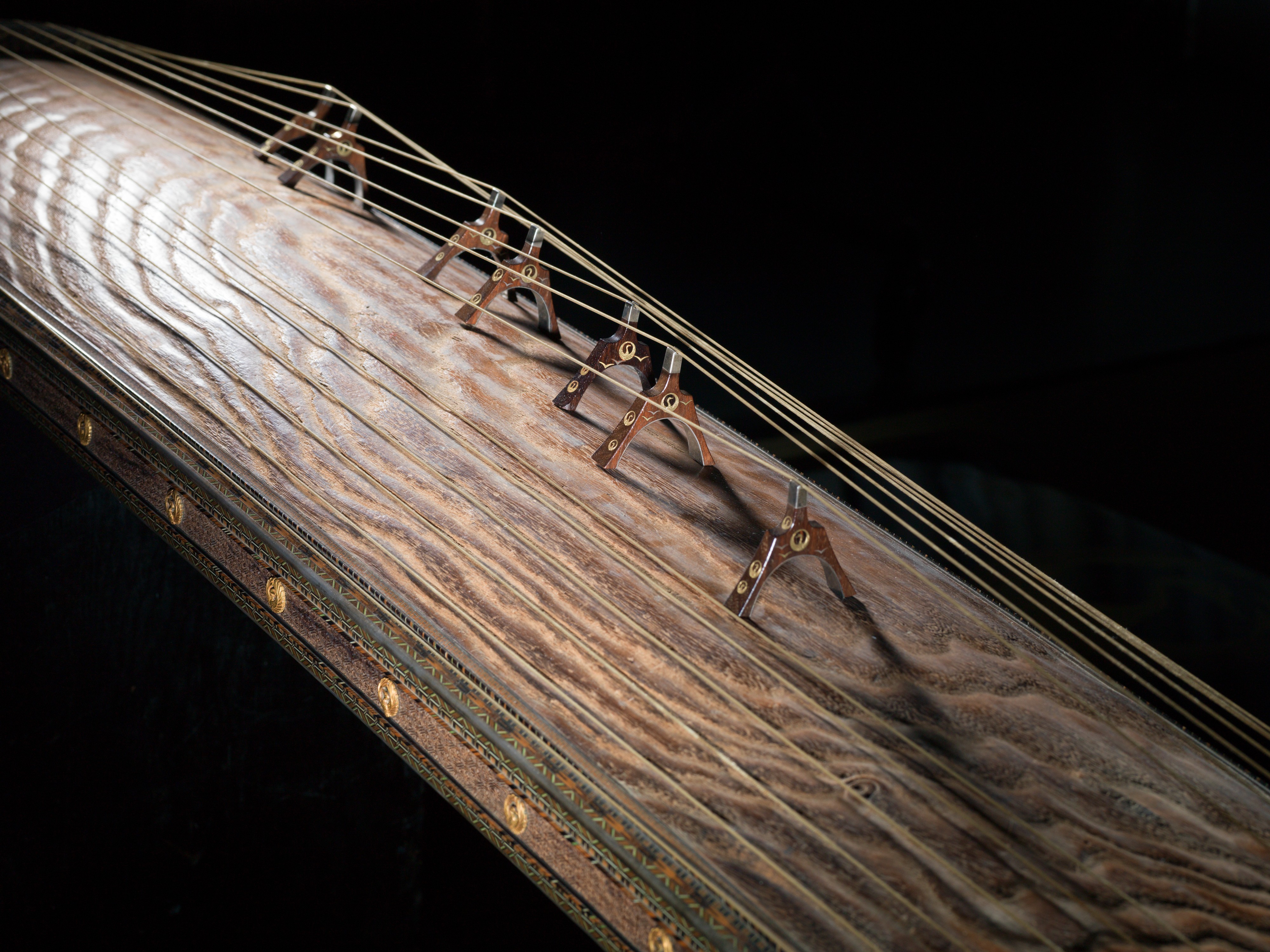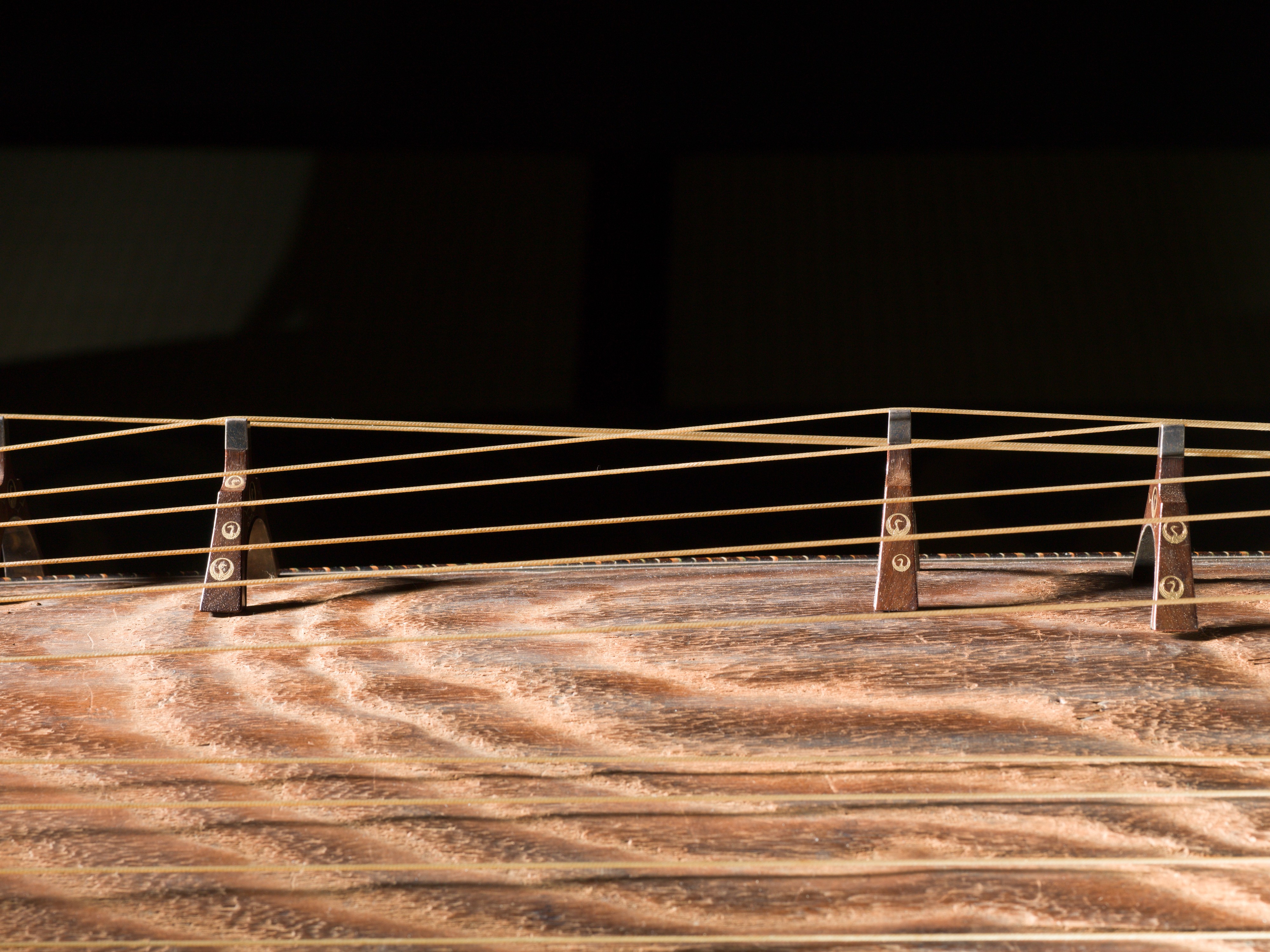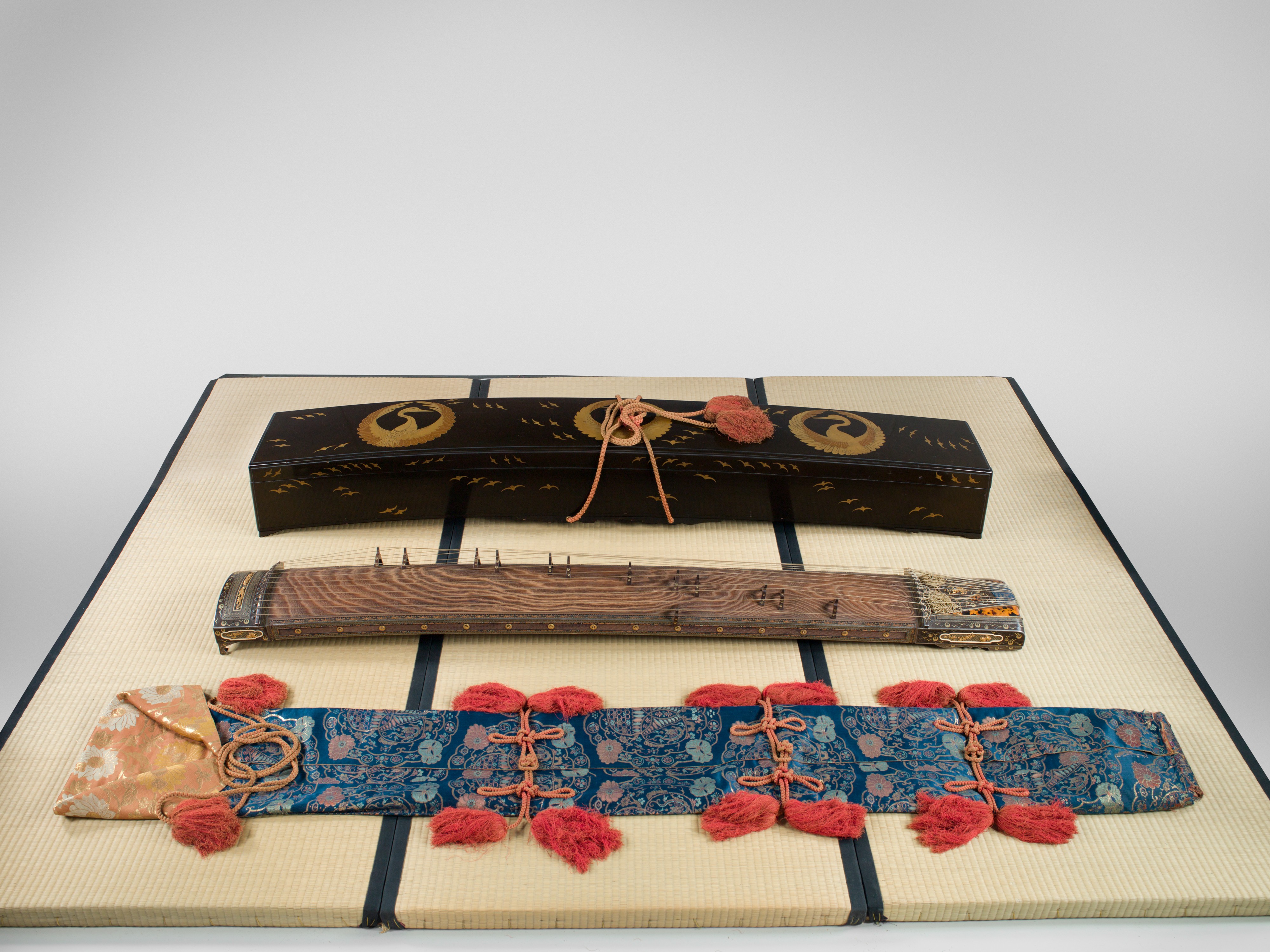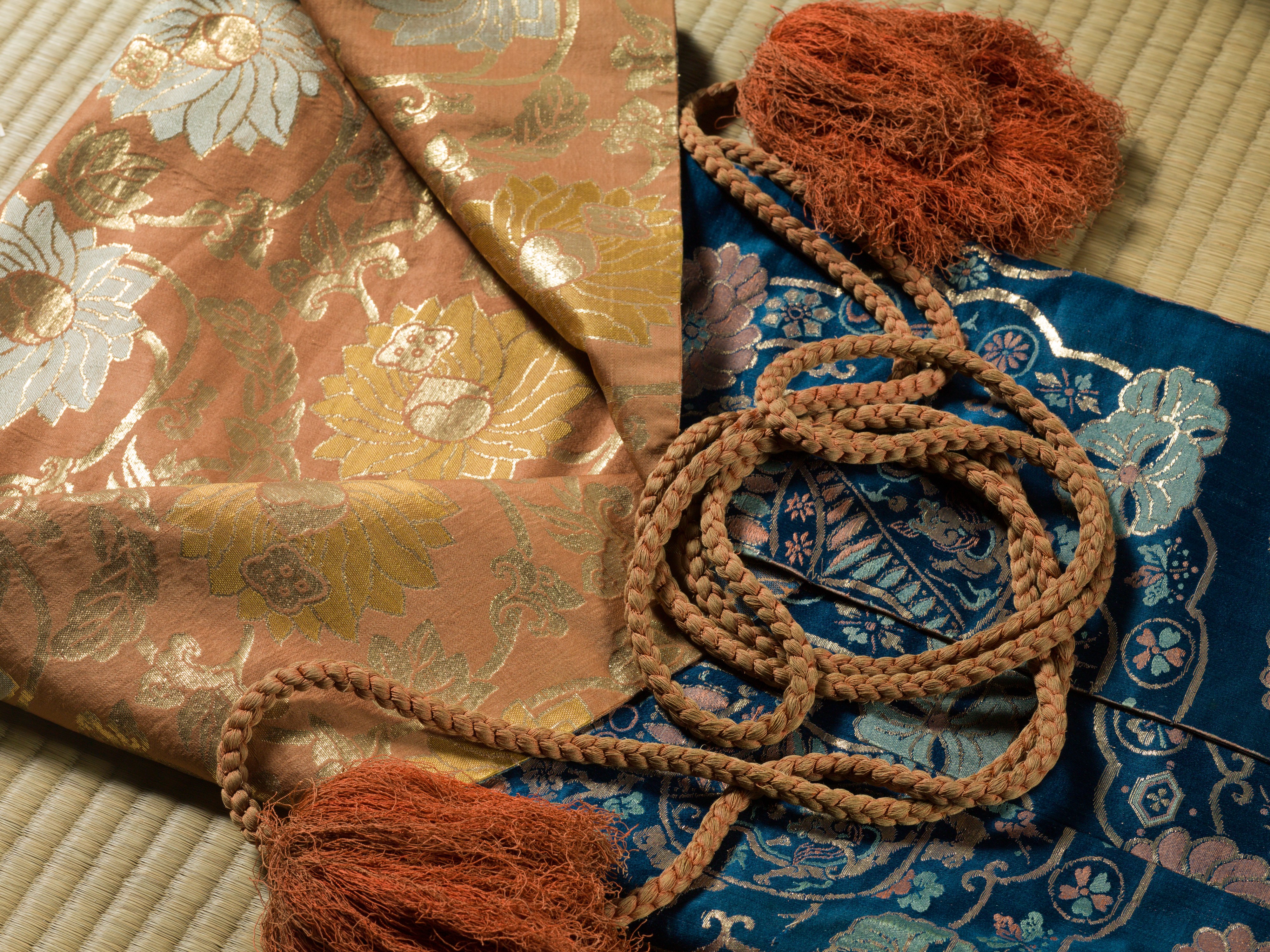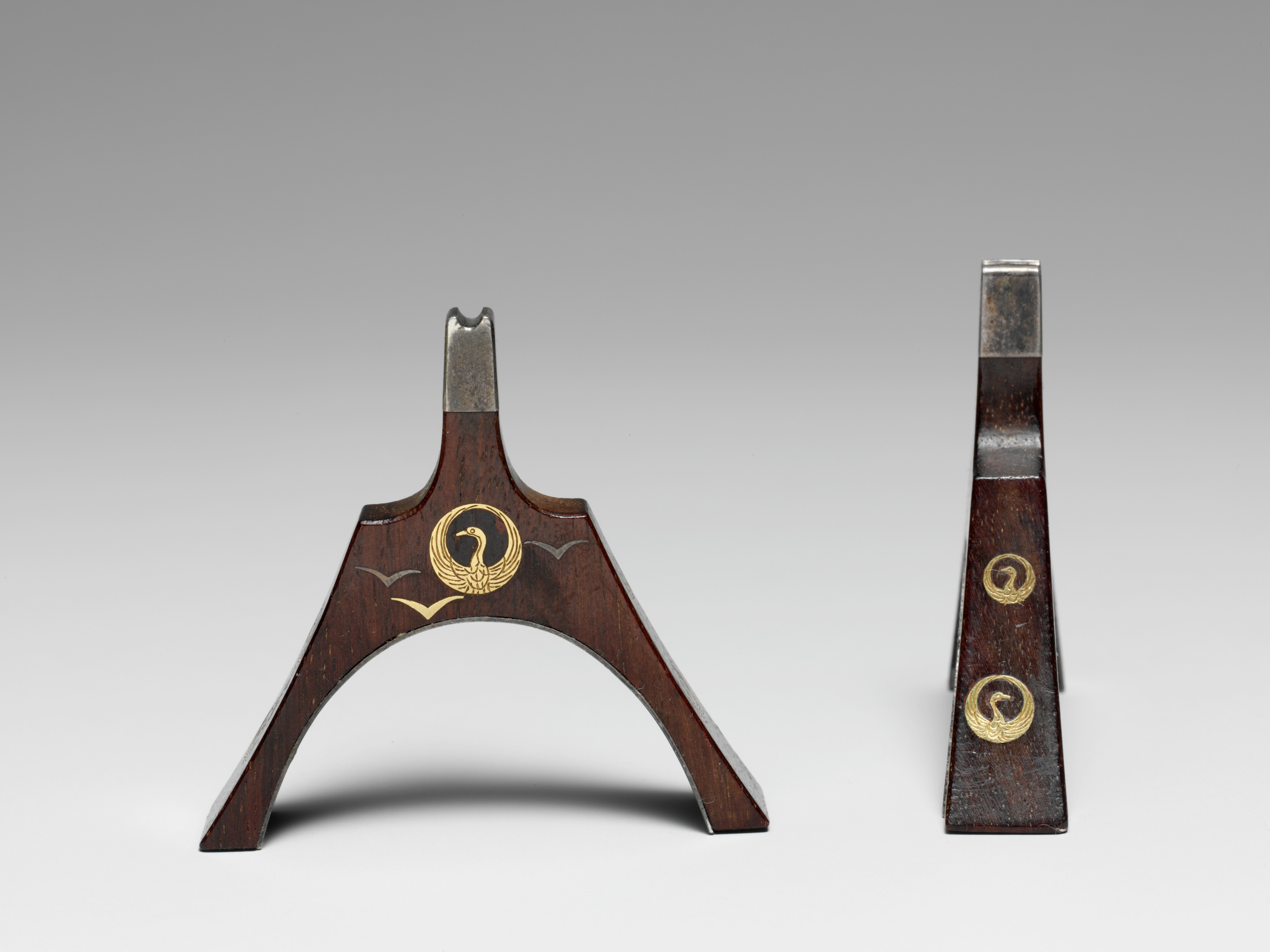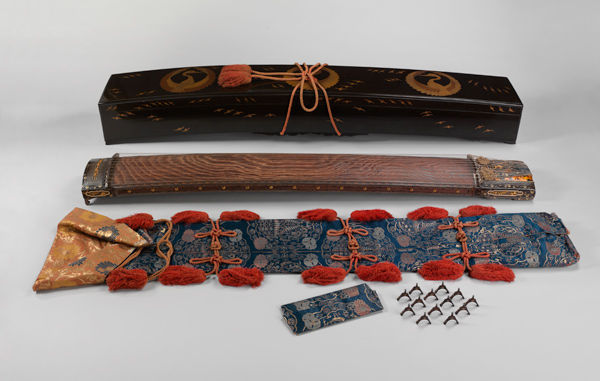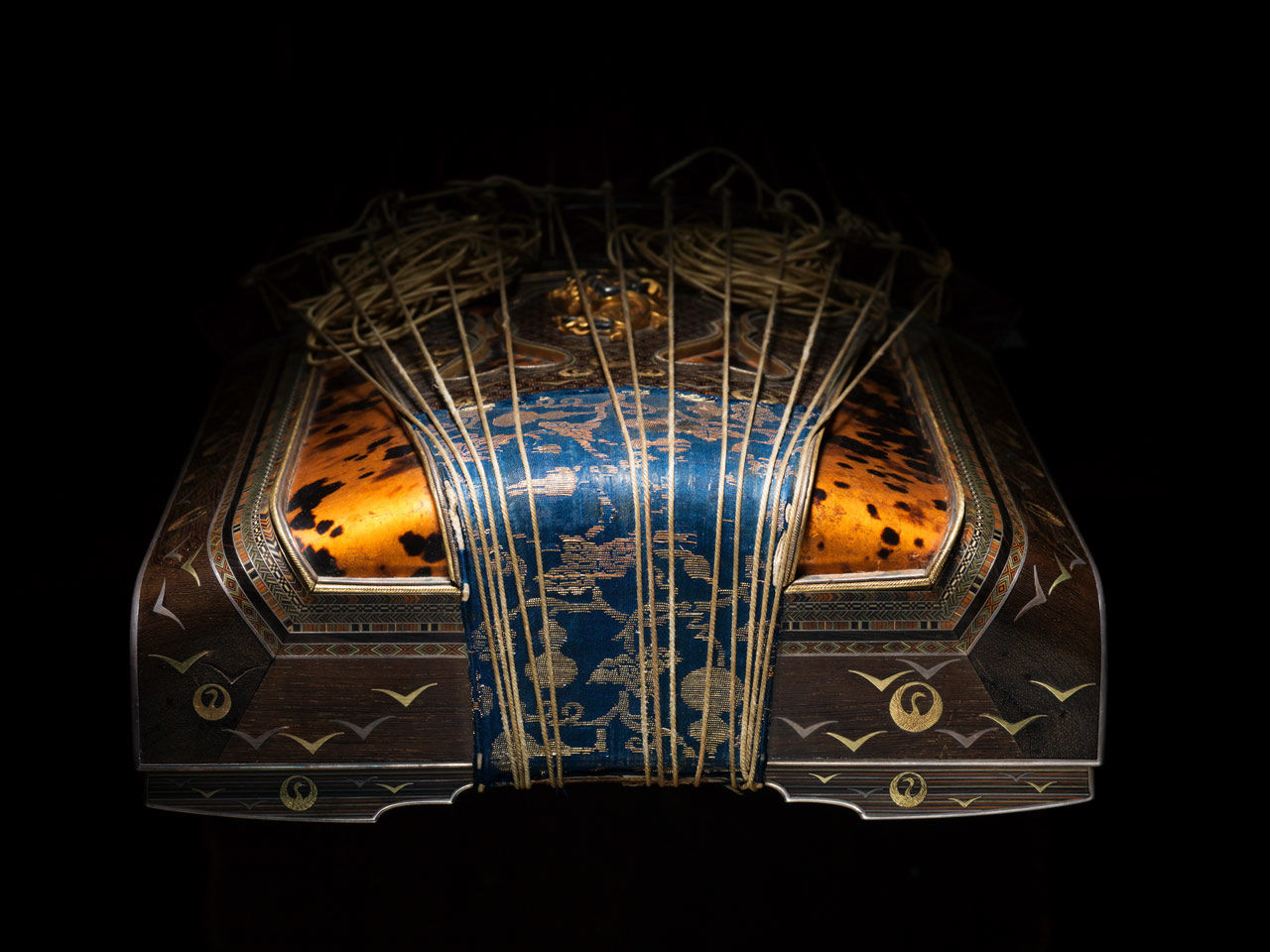Koto (箏)
Metalwork by Goto Teijo, 9th generation Goto master, Japan Japanese
Workshop of Gotō Yūjō Japanese
This rare acquisition is a tour de force of Japanese decorative and musical arts that is currently unparalleled in this country. Although a strong tradition existed before then, the foundation for modern Japanese koto music were formed during the seventeenth century. This koto, with it copious inlay and remarkable metalwork by Teijo, ninth master and perhaps most skilled member of the famous Goto family of metalwork artists, documents this important musical development. It also reflects the status of its owner and the koto's role as a symbol of Japan. All but the instrument's playing areas are exceptionally decorated. Gold crane medallions set against a finely carved diaper pattern adorn the sides, which are framed in a virtuosic rendering of inlaid woods, horn, ivory, and wire that extends onto both the upper and lower surfaces. The ends, of tagayasan and shitan wood, are embellished with geometric inlay patterns and metalwork lions and flowers in ivory frames. The elaborate black lacquered outer case, dating from the early nineteenth century, is decorated with gold makai-e cranes (symbol of the Karasumaru family) and geese, and its interior is lined with gold foil patterned with flying geese. The cloth wrap is composed of two silk embroidered fabrics of eighteenth- and nineteenth-century origin.
#9363. Koto
Due to rights restrictions, this image cannot be enlarged, viewed at full screen, or downloaded.
This artwork is meant to be viewed from right to left. Scroll left to view more.
